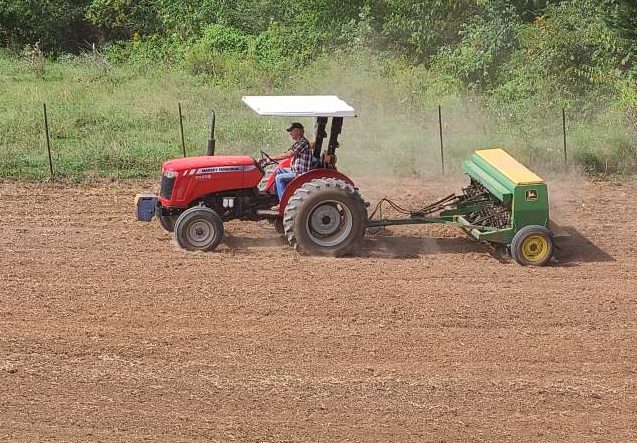

Dr. Gary Bates
Director and Professor
UT Beef & Forage Center
P: 865-974-7324
One of the common questions I get during the year has to do with forage crop establishment. It always starts out something like “I know I am a little late, but …” or something similar. Usually the situation is someone wanting to try to cut corners for planting and they want to know if it will work.
It is important to understand that rarely is planting success an all or nothing sort of thing. I have seen situations where someone did several things wrongs and still end up with a good stand. I have also seen people do everything right but still end up with a mediocre stand.
What we are trying to do is increase the potential for success with or planting. Another way to look at this is we are trying to minimize the potential problems the will limit plant establishment. Here are the important factors to consider when planting.
Seedbed preparation
Anytime you plant a forage crop, eliminating all weed competition will be important to increase your chance for crop establishment. If weeds are in the field, then they putting young grass seedlings at a disadvantage. I often get asked if someone needs to kill the existing plants prior to planting. You don’t have to, but if the weeds are too thick and the forage species being planted is weak as seedlings, there is a chance the stand establishment may be less successful than you want. The end result might be half a stand of grass.
Seeding method
Another common question has to do with the need for drilling verses being able to broadcast on top of the ground. Broadcasting is faster and easier, often with equipment that is already on the farm. The best method to plant is always to plant so that the seed is placed at the proper depth for that species, ensuring good soil to seed contact. If you have to choose, drilling is always the best method. There are some species, however, that germinate quick and are very aggressive as seedlings. Those are the ones that will do OK if they are broadcast. Species like annual ryegrass, white clover, and crabgrass can all be broadcast successfully, if everything else is done right. Other species, particularly large seeded species, like sorghum x sudangrass and wheat, do better drilled, since they have a harder time taking in enough water for germination when they are on top of the ground. Other species, like tall fescue and orchardgrass, are relatively slow to establish as seedlings, so they should be drilled to improve success.
Timing
“I know it’s a little late but….”. Oh man, how I love questions that start off like this. If you look at UT Extension Forage and Field Crop Seeding Guide, you will see recommended seeding dates for all the crops. Those dates are guidelines to help you plant when you will have the longest time for crops to establish with the best chances of results. It doesn’t mean that if you plant one week early it won’t work, or if you plant two weeks late it won’t work. We are just using long term weather data to provide planting guides. If it is a cool-season grass and you plant late, there is a chance it could freeze prior to the seedlings being big enough to handle. If it is a warm-season species, you could have just enough moisture to get the seed germinated, but they dry out prior to good root development. Either way you are left with half a stand.
Increasing your odds
Planting is a very expensive process. Between the cost of seed, herbicide, equipment and diesel, we want to make sure we only have to plant once, and we get exactly the stand we desire. Paying attention to details will help us increase the chances of success, and decreases the potential problems we might face.